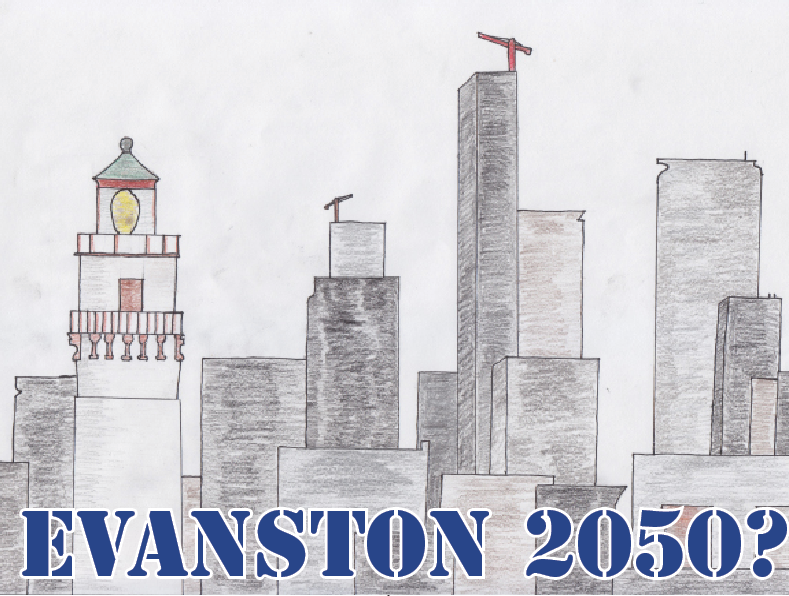Do new developments erase Evanston’s identity?
February 22, 2018
While many argue that new developments silence our diversity and culture, the truth is they are necessary for progress.
The past few years have seen several development proposed. Almost all are high rises, expanding sections of downtown and Chicago Ave. All, to have come with considerable pushback, the most controversial being the 15-story rental building that will replace the now closed Tommy Nevin’s pub.
The original Change.org petition against the development argued that the building fails in providing affordable housing, is too tall and doesn’t fit with Evanston’s culture. Some have gone as far as to connect construction to white supremacy.
The argument against affordable housing would be valid if it were true. City Council members on both sides of the argument are baffled as to where opponents have gotten the idea that the housing developments would be unaffordable. According to Alderman Cecily Fleming in Evanston Now, the buildings are well within city regulations for housing.
Another opposition argument is that the building is too tall, taking away from the residential charm of Evanston. There have been suggestions for imposing a rule like the one in Boulder, CO, which would keep buildings under a 5-story limit. However, Alderman Don Wilson, as quoted
in Evanston Now, said that doing so would increase living costs and drive lower income residents out of the city.
The truth is that there is no real problem with this development. Other cities like Oak Park, according to Curbed Chicago, have had no problem approving similar Albion buildings. The problem isn’t the developments, it’s Evanston’s resistance to them.
Evanston cannot stay the same architecturally, scenically and economically. Developments are a way to make sure a city continues to progress. Evanston residents need to stop fighting them, and accept that they are a positive change for the community. If they don’t, opponents are just barring Evanston from progress.
Evanston, long heralded for its balance of suburban and metropolitan personalities, is facing an identity crisis as several proposed high-rise developments threaten to commercialize the city’s downtown area.
In the past few years, Downtown Evanston, with its slew of locally-owned businesses and community plazas, has been jeopardized by profit-oriented infrastructure. Such development began in 2006 with the construction of the 25-story residential Sherman Plaza. Now, Evanston is at risk of losing its character to a set of high-rises, the tallest of which is an appalling 37-stories.
According to Chicago Curbed, there are currently five multi-story projects in the works, all with unique purposes, ranging from providing housing to providing rentable business space. Problematically, these apartments are not only astonishingly expensive, their presence stokes property taxes in Evanston as a whole, crowding out low income residents.
This situation has the potential to become incredibly dire. Evanston lost 40% of its affordable housing between 2004 and 2013 while the growth in high-end rental properties increase at an alarming rate. As a result, the city is becoming gentrified, especially as the racial makeup of its citizens becomes more homogeneously white. Over the past decade, the black population has dropped from more than 22 percent to roughly 17 percent.
A common argument is that modern urban planning spurs economic growth by attracting tourism and investment. While this growth may be a reality, revenue generated by big-ticket infrastructure typically goes straight to pockets of property owners and the city government with no guarantee that it will ever be redistributed in a way that assists the lower classes.
Overall, it is indisputably the case that if new development proposals are approved by the City Council, Evanston will become commercialized. The prospect of economic growth for the wealthy is not enough to justify the gentrification of a city so valued for its residential peace and diverse populus.






















